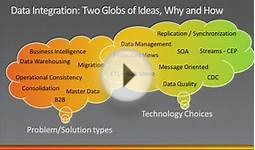Microsoft Master Data Management
 Models are the highest level of data organization in Master Data Services. A model defines the structure of data in your master data management solution. A model contains the following objects:
Models are the highest level of data organization in Master Data Services. A model defines the structure of data in your master data management solution. A model contains the following objects:
- Entities
- Attributes and attribute groups
- Explicit and derived hierarchies
- Collections
Models organize the structure of your master data. Your Master Data Services implementation can have one or many models that each group similar kinds of data. In general, master data can be categorized in one of four ways: people, places, things, or concepts. For example, you can create a Product model to contain product-related data or a Customer model to contain customer-related data.
You can assign users and groups permission to view and update objects within the model. If you do not give permission to the model, it is not displayed.
At any given time, you can create copies of the master data within a model. These copies are called versions.
 When you have defined a model in a test environment, you can deploy it, with or without the corresponding data, from the test environment to a production environment. This eliminates the need to recreate your models in your production environment.
When you have defined a model in a test environment, you can deploy it, with or without the corresponding data, from the test environment to a production environment. This eliminates the need to recreate your models in your production environment.
A model contains entities. Entities contain attributes, explicit hierarchies, and collections. Attributes can be contained in attribute groups. Domain-based attributes exist when an entity is used as an attribute for another entity.
This image shows the relationships among the objects in a model.
Derived hierarchies are also model objects, but they are not shown in the image. Derived hierarchies are derived from the domain-based attribute relationships that exist between entities. See for more information.
Master data is the data that is contained in the model objects. In Master Data Services, master data is stored as members in an entity.
Model objects are maintained in the System Administration functional area of the Master Data Manager user interface.
In the following example, the objects in the Product model logically group product-related data.
Other common models are:
- Accounts, which could include entities such as balance sheet accounts, income statement accounts, statistics, and account type.
- Customer, which could include entities such as gender, education, occupation, and marital status.
Актуальная информация чистка бассейнов на нашем сайте.
You might also like


Job seeker uses billboard across from Kitchener's Google office to stand out .. — MetroNews Canada
Brumwell-worked in the information technology and project management fields in recent years for companies including Enbridge. Much of his work in the past five years has been on contract, leading him to want to seek out something more permanent.
Low-tech billboard gets high-tech attention — OurWindsor.ca
Brumwell worked in the information technology and project management fields in recent years for companies including Enbridge. Much of his work in the past five years has been on contract, leading him to want to seek out something more permanent.
A privilege to sharing the joy of music — BDlive
Now he teaches the same instrument as part of his work with Buskaid, although he dreams of starting his own project management business "with a few friends", information technology and project management being what he studied after finishing school.




